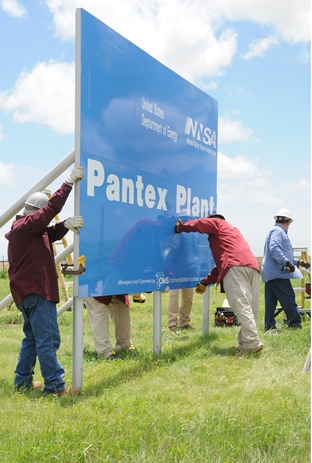Pantex Blog
Pantex Supports United Way
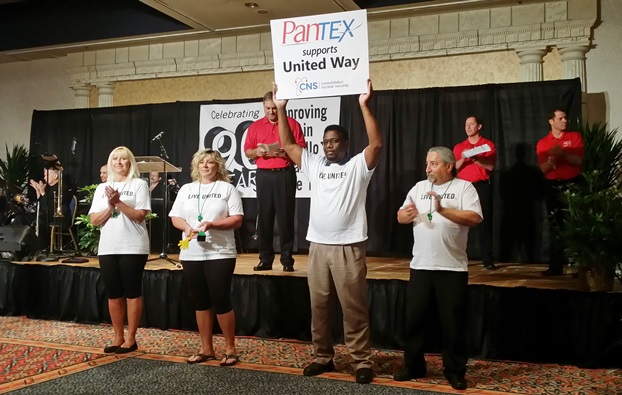
Clarence Rashada holds up a sign expressing Pantexan support during the United Way campaign kickoff event last week as Kendra Garcia, from left, Kathy Felder and Charles Thomas look on. The four are loaned executives from Pantex, sent to support the United Way campaign, which has a theme this year of “Make it Personal.”
Each year, Pantex employees pledge hundreds of thousands of dollars to United Way of Amarillo and Canyon, making the plant a top giver to the campaign.
Pantex Receives Seven NNSA Awards
Pantexans recognized for stockpile stewardship work
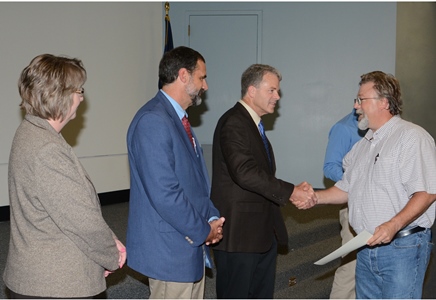
Pantexan Dave Thomas, from right, receives a Defense Programs Awards of Excellence from NNSA Assistant Deputy Administrator for Stockpile Management Steve Goodrum, while NNSA Production Office Manager Steve Erhart and Pantex Site Manager Michelle Reichert wait to congratulate him.
NNSA Assistant Deputy Administrator for Stockpile Management Steve Goodrum recently presented Defense Programs Awards of Excellence (DPAE) to 175 Pantexans who excelled at Stockpile Stewardship work during 2013.
The seven awards were presented to teams involved in a variety of efforts which include nuclear weapons work, environmental remediation, high explosives testing and production planning.
The DPAE program was established in 1982 to recognize individuals or teams for significant achievements in quality, productivity, cost savings, safety or creativity of work performed in support of the Stockpile Stewardship Program.
“It is a great honor for so many Pantexans to be recognized for their outstanding work in support of Stockpile Stewardship,” said Pantex Site Manager Michelle Reichert. “The number of awards and the diversity of work involved are truly indicative of the dedication and innovation of the entire team at Pantex.”
DP Awards were presented to Pantexans involved in the following efforts:
- A team of 28 Pantexans was able to resolve an issue related to the W76-1 Life Extension Program (LEP).
- A team of 51 people at Pantex reconfigured the plant’s Laser Gas Sampling System to perform work on the B83, completing 124 percent of the planned workload in FY13.
- A trio of environmental experts at Pantex performed excellent work to complete the five-year review of the site’s legacy contamination cleanup remedies under the auspices of the Comprehensive Environmental Response, Compensation and Liability Act.
- A team of 10 Pantexans was able to redesign and rebuild a device used to test high explosive response to electric shock.
- A team of 20 Pantex workers provided excellent support to the Warhead Measurement Campaign (WMC), which is a program designed to obtain a standardized set of signature data from the enduring stockpile and historical U.S. weapons.
- The NNSA Integrated Production Planning and Execution System (IPRO) Implementation Project Team achieved a major milestone with the deployment of IPRO at Pantex.
- Another team of 40 Pantexans is being honored for outstanding support of the new IPRO system, utilizing existing technology to effectively answer end-user questions and share knowledge with other sites.
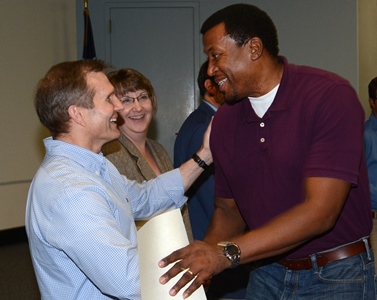
Consolidated Nuclear Security CEO Jim Haynes, left, congratulates Lennon Mings, right, for winning a DPAE as Pantex Site Manager Michelle Reichert looks on.
Pantex Conducts Emergency Exercise

Pantex Fire Department emergency response personnel work to extract a training mannequin from beneath an overturned car at the plant’s emergency exercise Wednesday. The exercise, which involved numerous offsite participants from local and state agencies, centered on a simulated tornado that struck the plant, leading to the overturned vehicle.
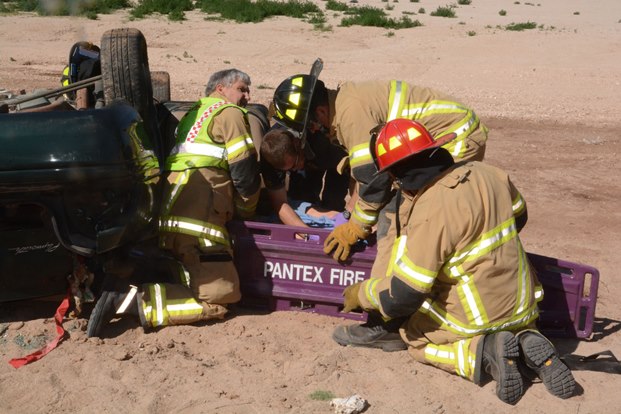
Last of Big Dogs Gets New Home
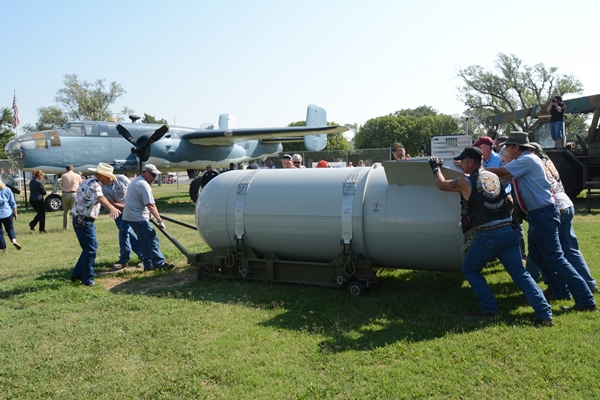
“The Last of the Big Dogs” has a new home after Pantex workers Wednesday delivered one of the few remaining B53 nuclear weapons cases to the Freedom Museum USA in Pampa, Texas.
The final B53, which received its “Big Dog” nickname from dismantlement workers due to its massive size, was dismantled at Pantex on October 25, 2011 in an historic ceremony. The B53 was a Cold War icon, and was the oldest, the largest and the most destructive nuclear weapon in the U.S. arsenal at the time it was retired.
Monica Graham, Pantex historian, was looking for a way to preserve the legacy of the B53 and honor the workers who built, maintained and dismantled it. The Freedom Museum, which is located about 45 minutes from Pantex, volunteered to take the weapon on loan to add to its large collection of historical military artifacts.
“This was an important effort to publicly display this iconic weapon that served in secret for decades, helping to ensure the safety of America,” Graham said.
The B53 was first put into service in 1962, a year when Cold War tensions were at their highest during the Cuban Missile Crisis. It served a critical role in the nation’s nuclear deterrent through the end of the Cold War, retiring from the active stockpile in 1997.
The B53 weighed around 10,000 pounds and was about the size of a minivan. Many B53s were dismantled in the 1980s, but a significant number remained in the U.S. arsenal until they were retired in 1997.
The B53 which was delivered this week consisted only of the outer casing of the weapon and is empty on the inside. It is one of only three such museum artifacts in the country built from a stockpile weapon. The others were assembled from training units or spare parts.
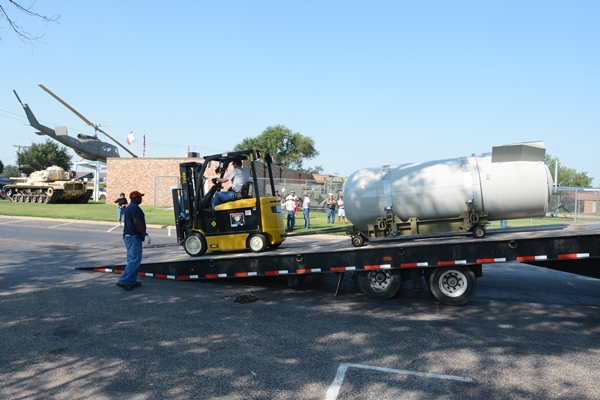
Sign of the Times
New entry signs installed at Pantex as CNS takes over site
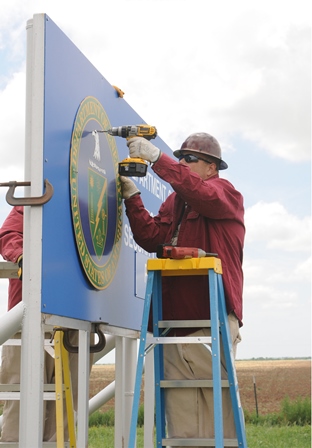
Workers put up a new entry sign at the Pantex Tuesday after Consolidated Nuclear Security, LLC, began its tenure as management and operations contractor at the plant.
